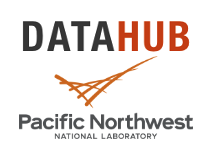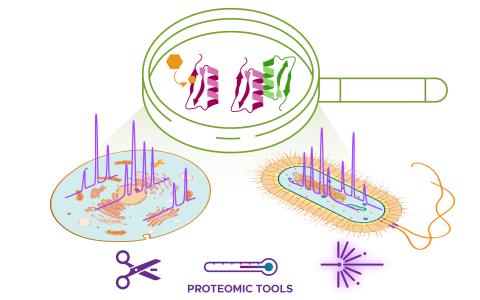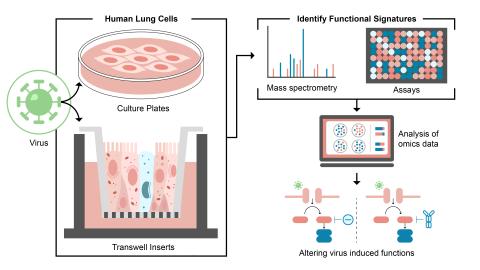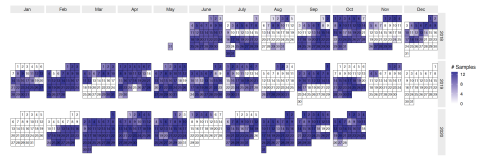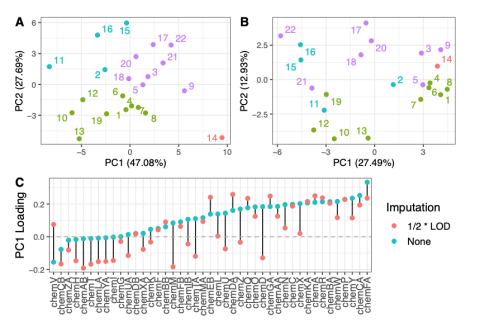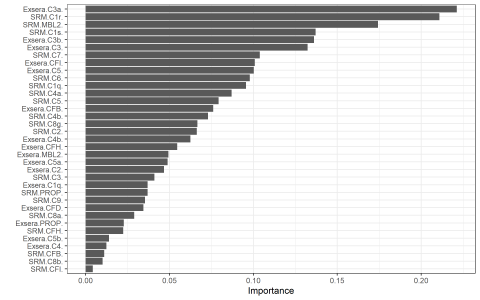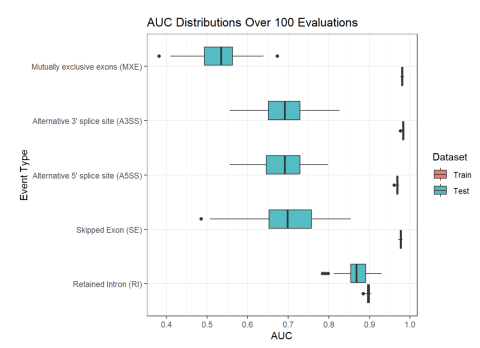Created on 2025-06-10T00:34:54+00:00 by LN Anderson
Filter results
Category
- (-) Human Health (112)
- Scientific Discovery (369)
- Biology (258)
- Earth System Science (161)
- Integrative Omics (73)
- Microbiome Science (47)
- National Security (31)
- Computational Research (25)
- Computing & Analytics (17)
- Chemical & Biological Signatures Science (12)
- Energy Resiliency (12)
- Weapons of Mass Effect (12)
- Chemistry (10)
- Data Analytics & Machine Learning (9)
- Computational Mathematics & Statistics (7)
- Materials Science (7)
- Atmospheric Science (6)
- Data Analytics & Machine Learning (6)
- Renewable Energy (6)
- Visual Analytics (6)
- Coastal Science (4)
- Ecosystem Science (4)
- Energy Storage (3)
- Plant Science (3)
- Solar Energy (3)
- Bioenergy Technologies (2)
- Cybersecurity (2)
- Distribution (2)
- Electric Grid Modernization (2)
- Energy Efficiency (2)
- Grid Cybersecurity (2)
- Transportation (2)
- Computational Mathematics & Statistics (1)
- Grid Analytics (1)
- High-Performance Computing (1)
- Subsurface Science (1)
- Terrestrial Aquatics (1)
- Wind Energy (1)
Tags
- Virology (77)
- Immune Response (51)
- Time Sampled Measurement Datasets (51)
- Differential Expression Analysis (46)
- Gene expression profile data (45)
- Homo sapiens (42)
- Mass spectrometry data (31)
- Multi-Omics (30)
- Health (23)
- Virus (23)
- Viruses (23)
- MERS-CoV (19)
- Mus musculus (18)
- West Nile virus (13)
- Influenza A (11)
- Ebola (9)
- Predictive Phenomics (9)
- Lethal Human Viruses (8)
- Microarray (7)
- HCoV-299E (6)
- Human Interferon (6)
- Omics (6)
- Omics-LHV Project (6)
- Resource Metadata (6)
- TA2 (6)
- Type 1 Diabetes (6)
- Autoimmunity (5)
- Machine Learning (5)
- Mass Spectrometry (5)
- Proteomics (5)
Created on 2024-10-16T17:27:40+00:00 by LN Anderson and is pending updates.
Created on 2024-10-15T19:55:00+00:00 by LN Anderson ; Last updated 2024-11-13T15:01:44+00:00 and is pending public release before or by 2025-10-01. Human Liver Epithelium Response to HCoV-229E Infection Epigenomics (ACS-DP4) The purpose of this experiment was to evaluate how wild-type Human...
Category
Created on 2024-10-15T19:55:00+00:00 by LN Anderson ; Last updated 2024-11-13T15:01:44+00:00 and is pending public release before or by 2025-10-01. Human Primary Airway Epithelium Response to HCoV-229E Infection Transcriptomics (ACS-DP3) The purpose of this experiment was to evaluate the human host...
Category
Created on updated 2024-10-01T21:34:23+00:00 by LN Anderson ; Last updated 2024-11-13T15:01:44+00:00 and is pending public release. Human Host Cellular Response to HCoV-229E Infection Proteomics (ACS-JM-DP2) The purpose of this experiment was to evaluate the human host cellular response to wild-type...
Created 2024-09-17T19:19:38+00:00 by LN Anderson ; Last updated 2024-10-17T17:30:32+00:00 and is pending public release. Human A549 and MRC5 Cell Response to HCoV-229E Infection Transcriptomics (ACS-DP1) The purpose of this experiment was to evaluate the human host cellular response to wild-type...
Category
Last updated on 2025-01-31T00:37:40+00:00 by LN Anderson High-density Lipoprotein (HDL) Structure and Function (JM-DP1) The purpose of this experiment was to investigate how the interactions between APOA1 and APOA2 on the surface of high-density lipoproteins (HDL) impact particle function...
Category
Comprised of 6,426 sample runs, The Environmental Determinants of Diabetes in the Young (TEDDY) proteomics validation study constitutes one of the largest targeted proteomics studies in the literature to date. Making quality control (QC) and donor sample data available to researchers aligns with...
This data is supplementary to the manuscript Expanding the access of wearable silicone wristbands in community-engaged research through best practices in data analysis and integration by Lisa M. Bramer, Holly M. Dixon, David J. Degnan, Diana Rohlman, Julie B. Herbstman, Kim A. Anderson, and Katrina...
A total of 172 children from the DAISY study with multiple plasma samples collected over time, with up to 23 years of follow-up, were characterized via proteomics analysis. Of the children there were 40 controls and 132 cases. All 132 cases had measurements across time relative to IA. Sampling was...
Inclusion levels of alternative splicing (AS) events of five different varieties (i.e. skipped exon (SE), retained intron (RI), alternative 5’ splice site (A5SS), alternative 3’ splice site (A3SS), and mutually exclusive exons (MXE)) were measured in human blood samples from two separate cohorts of...
Last updated on 2024-02-11T22:41:43+00:00 by LN Anderson MERS-CoV Experiment MCL004 Metadata The purpose of this experiment was to evaluate the host response to MERS-CoV virus infection. Sample data was obtained from human lung adenocarcinoma cells (Calu-3) and processed for genome binding/occupancy...
Category
Last updated on 2024-02-11T22:41:43+00:00 by LN Anderson MERS-CoV Experiment MCL005 Metadata The purpose of this experiment was to evaluate the human host epigenetic response to MERS-CoV virus infection. Samples were obtained from human lung adenocarcinoma cells (Calu-3) and processed for...
Category
Omics-LHV, West Nile Experiment WCD003 The purpose of this West Nile experiment was to obtain samples for omics analysis in mouse dendritic cell response to wild-type West Nile virus (WNV). Overall Design: Mouse dendritic cells (2 x 10^5) were treated with wild-type WNV and collected in parallel...
Category
Omics-LHV, West Nile Experiment WCN004 The purpose of this West Nile experiment was to obtain samples for omics analysis in mouse cerebral cortex neurons in response to wild-type West Nile Virus (WNV; WNV-NY99 382) and mutant WNV-E218A (WNV-NY99 382) viral infection. Overall Design: Mouse cortical...
